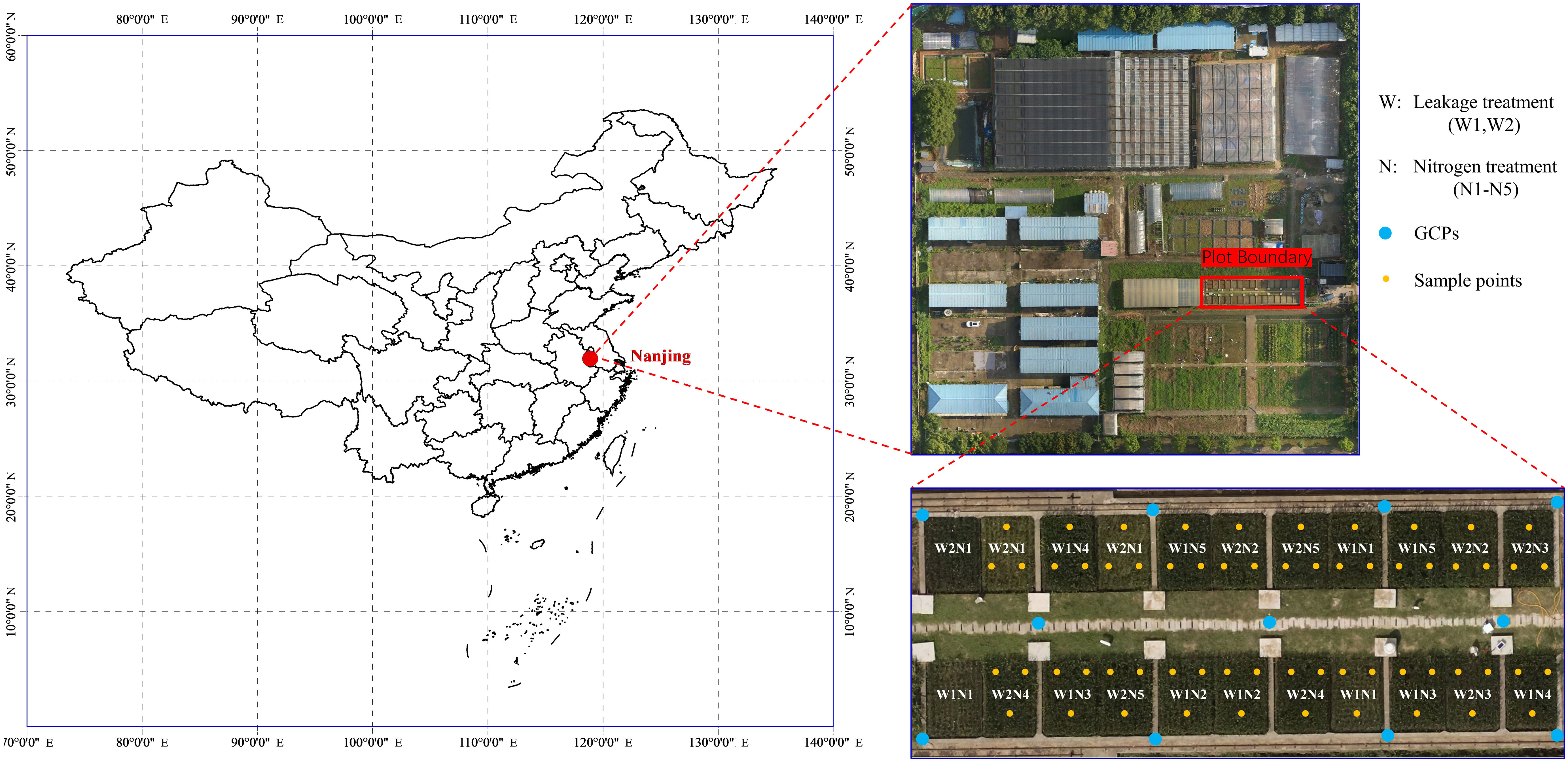
95% of researchers rate our articles as excellent or good
Learn more about the work of our research integrity team to safeguard the quality of each article we publish.
Find out more
CORRECTION article
Front. Plant Sci. , 13 June 2023
Sec. Technical Advances in Plant Science
Volume 14 - 2023 | https://doi.org/10.3389/fpls.2023.1229908
This article is a correction to:
Retrieving rice (Oryza sativa L.) net photosynthetic rate from UAV multispectral images based on machine learning methods
A Corrigendum on
Retrieving rice (Oryza sativa L.) net photosynthetic rate from UAV multispectral images based on machine learning methods
by Wu T, Zhang W, Wu S, Cheng M, Qi L, Shao G and Jiao X (2023) 13:1088499. doi: 10.3389/fpls.2022.1088499
In the published article, there was an error in the caption for Figure 1 as published. The explanation of N was displayed as “N represents the nitrogen treatments (including N1-N5: 0, 75, 150, 225 and 300 kg/ha total pure nitrogen, respectively”. The corrected Figure 1 caption appears below:

Figure 1 Study area and experiment treatments. W represents the leakage treatments (including W1: 3mm/day and W2: 5mm/day); N represents the nitrogen treatments (including N1-N5: 0, 150, 225, 300 and 375 kg/ha total pure nitrogen, respectively); GCP is abbreviation of gourd control points for geometric correction; Ground measurements in each sample point were averaged from 3 representative plants.
N represents the nitrogen treatments (including N1-N5: 0, 150, 225, 300 and 375 kg/ha total pure nitrogen, respectively)
In the published article, there was an error. The nitrogen application of N2–N5 fertilizer treatment levels was incorrectly written.
A correction has been made to 2 Materials and methods, 2.1 Study area, paragraph 1. This sentence previously stated:
“five nitrogen fertilizer levels (N1-N5: 0, 75, 150, 225, and 300 kg/ha total pure nitrogen)”
The corrected sentence appears below:
“five nitrogen fertilizer levels (N1–N5: 0, 150, 225, 300 and 375 kg/ha total pure nitrogen)”
The authors apologize for these errors and state that this does not change the scientific conclusions of the article in any way. The original article has been updated.
All claims expressed in this article are solely those of the authors and do not necessarily represent those of their affiliated organizations, or those of the publisher, the editors and the reviewers. Any product that may be evaluated in this article, or claim that may be made by its manufacturer, is not guaranteed or endorsed by the publisher.
Keywords: UAV multispectral remote sensing, rice canopy, net photosynthetic rate, vegetation index, textural index, machine learning
Citation: Wu T, Zhang W, Wu S, Cheng M, Qi L, Shao G and Jiao X (2023) Corrigendum: Retrieving rice (Oryza sativa L.) net photosynthetic rate from UAV multispectral images based on machine learning methods. Front. Plant Sci. 14:1229908. doi: 10.3389/fpls.2023.1229908
Received: 27 May 2023; Accepted: 31 May 2023;
Published: 13 June 2023.
Approved by:
Frontiers Editorial Office, Frontiers Media SA, SwitzerlandCopyright © 2023 Wu, Zhang, Wu, Cheng, Qi, Shao and Jiao. This is an open-access article distributed under the terms of the Creative Commons Attribution License (CC BY). The use, distribution or reproduction in other forums is permitted, provided the original author(s) and the copyright owner(s) are credited and that the original publication in this journal is cited, in accordance with accepted academic practice. No use, distribution or reproduction is permitted which does not comply with these terms.
*Correspondence: Guangcheng Shao, c2djbG5AMTI2LmNvbQ==; Xiyun Jiao, eHlqaWFvQGhodS5lZHUuY24=
Disclaimer: All claims expressed in this article are solely those of the authors and do not necessarily represent those of their affiliated organizations, or those of the publisher, the editors and the reviewers. Any product that may be evaluated in this article or claim that may be made by its manufacturer is not guaranteed or endorsed by the publisher.
Research integrity at Frontiers

Learn more about the work of our research integrity team to safeguard the quality of each article we publish.